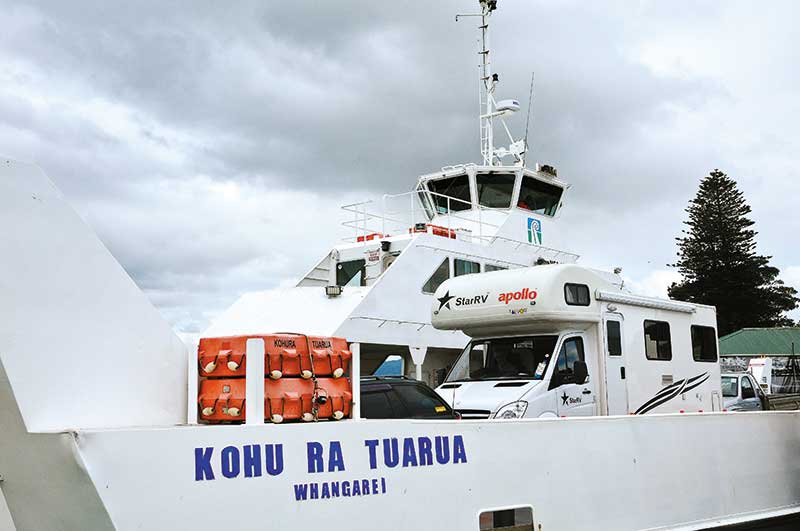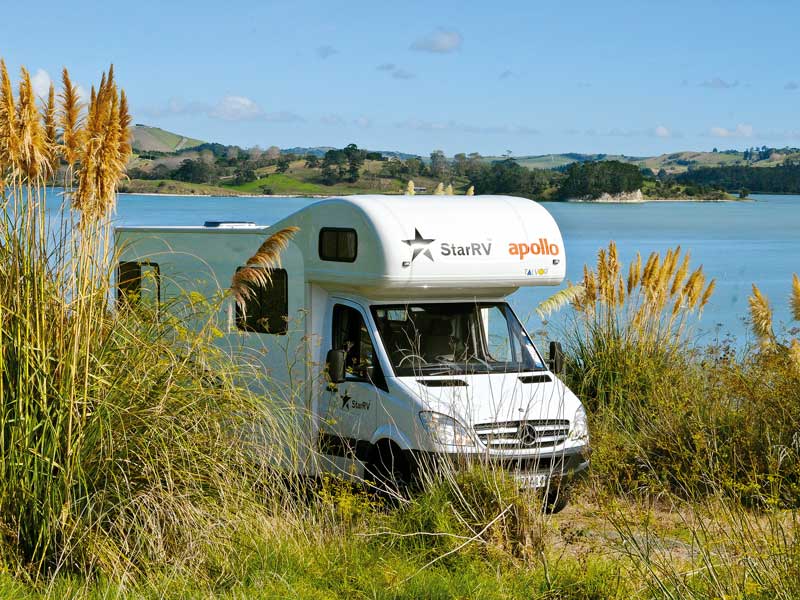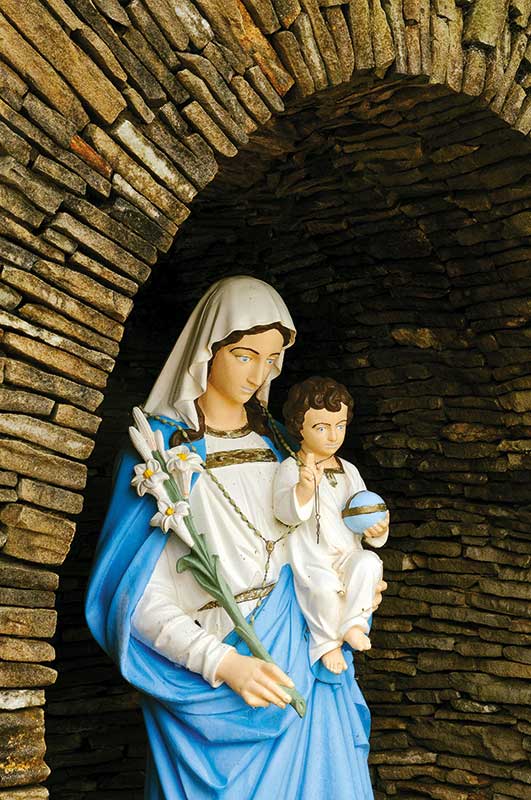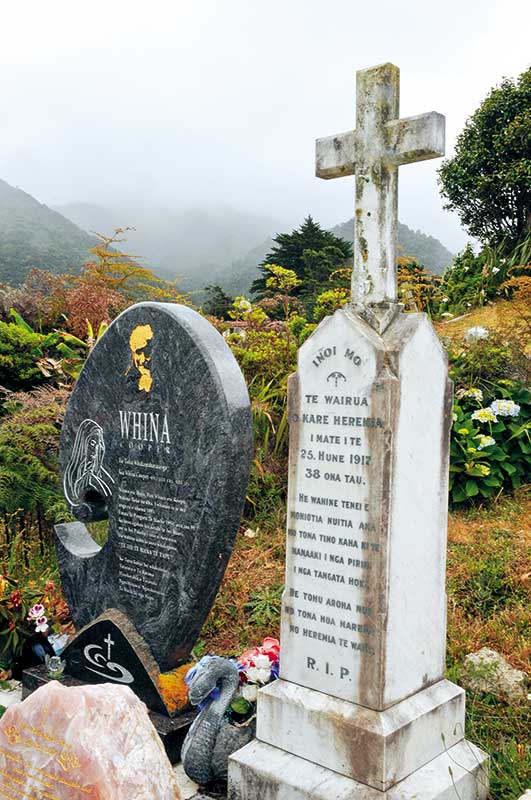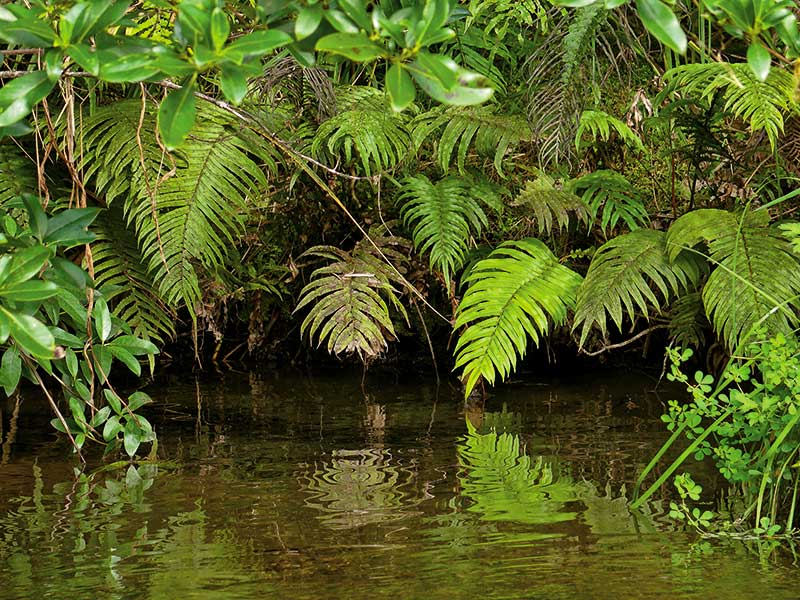It’s appropriate to arrive in the north Hokianga by water. That is the way the Maori first arrived in the area, on canoes, then whalers and kauri millers arrived on ships, and then missionaries and farming settlers arrived from Auckland on coastal steamers.
Still now, most people travel across the giant Hokianga Harbour to its north side on the ferry between Rawene and Kohukohu. And so it is with us. Sam drives the big Apollo motorhome up the ramp onto Kohu Ra Tuarua, the ramp rises with a metallic clang and off she goes, steaming across the duck-egg green water through peaky little waves ruffed by breeze.
Kohukohu
In the 1880s, Kohukohu was a thriving mill town with 5000 men on the payroll of Yarborough & Andrews’ mill. Kauri trees were felled, logs hauled in, milled, and then the wood was shipped out until, eventually, the trees were gone and the mill closed.
Kohukohu’s big moment is long gone, but it’s still home to 150 folk, serves a wide farming community and is a stop-off place for people who arrive on the ferry. Its heritage sweetness attracts more than a usual small-town share of artists, organic gardens and creative people.
There are many Kohukohu buildings over 100 years old so some of the town’s good women, who relish its history and classic Kiwi architecture, have compiled a brochure listing 31 of these buildings on a cute, hand-drawn, map.
Panguru
Later, we take the road less travelled and go west towards Panguru, past small Maori farming communities with pretty churches. The road winds through steep hill country, where pine forest has been recently felled.
Panguru has a marae, general store, petrol pump and a school. This is Whina Cooper’s hometown. She lived here as a child, owned and ran the store for 17 years, and had two dairy farms in the valley.
Whina is most famous for leading the Maori Land March in 1975 at the age of 79. It started from Te Hapu, New Zealand’s northernmost town, and went 2,300km to Wellington. The march gained traction as it progressed and Whina arrived on parliament’s steps with 5000 people following her.
This march was instrumental in governments’ subsequent efforts to honour the Treaty of Waitangi more fairly and return illegally acquired land to the descendants of its former Maori owners.
Whina passed away here. She rests in the cemetery, under sacred Mt Panguru, the mountain of prayer.
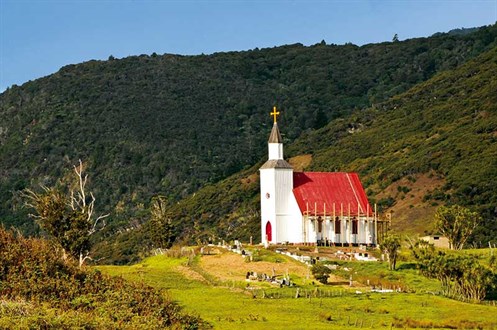
Pawarenga
From Panguru we drive north towards Pawarenga along curling dusty roads, past glossy black cows in fields white with cow parsley.
Pawarenga is heralded from a distance by St Gabriel’s Church facing north across the silvery expanse of Whangape Harbour. The church sits on a low hill, above flat farmland, Maokora Marae and a cluster of houses. Behind it, dark bush-covered mountains give it a sense of mystery.
We park Apollo on the edge of Whangape Harbour and walk towards its exit to the ocean. Herds of horses graze between the sand and the church, foals drink from mares, frisky fillies nip each other, galloping and frolicking.
Mungamuka
Mungamuka River is in our sights for the night. The Mungamuka road has cult appeal for boy-racers and motorbikers; for 20km this mostly sealed road curves up, down and around a seemingly endless number of corners. According to one enthusiastic motorbiker, the road has been elegantly engineered with perfect cambers that allow thrill-seekers to go faster without pushing the limits of safety.
Our Apollo, being 7.7m long and 3.5m high, was built for comfort not speed, so we amble up the gorge and around the famous curves looking for a stopping place, where two rivers meet, that we have vague directions to.
Here, in the heart of Ratea Forest, Apollo snuggles under a giant pururi tree next to the river and we settle in. I explore the river, wading through knee-high pools, clambering around smooth rocks and crunching over myriads of small round pebbles.
Night arrives with a crisp star-spangled sky and late moon rising, a ruru hoots in a nearby tree and the river burbles. This, the north Hokianga, has a wild beauty that is more than visual – it is visceral, it penetrates the soul.
Read the full article in issue #130 of Motorhomes Caravans & Destinations magazine. Subscribe here.

